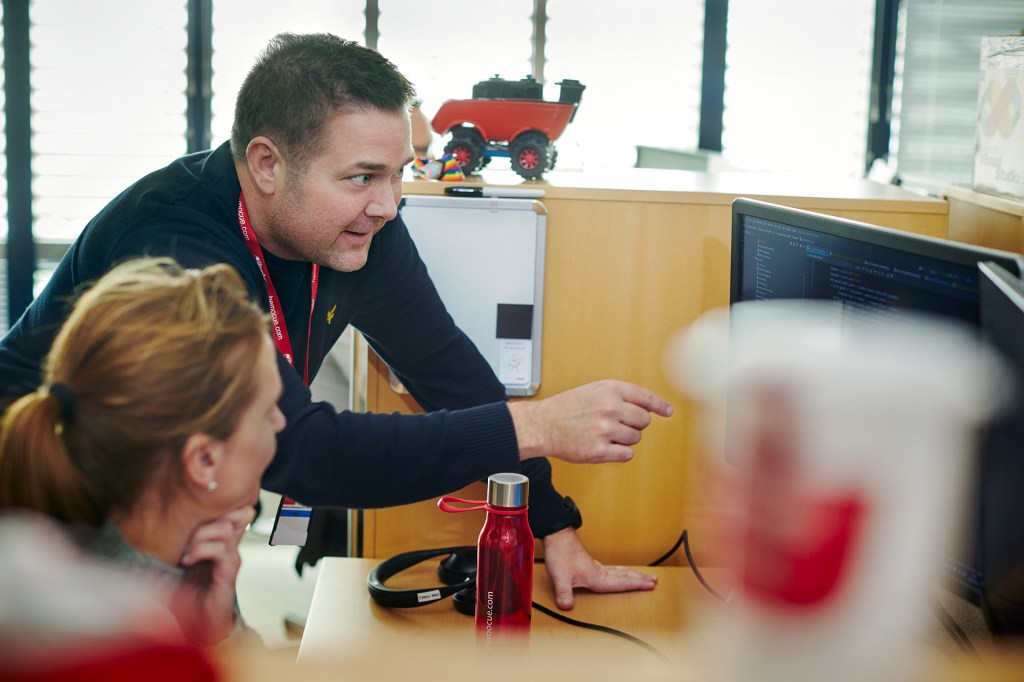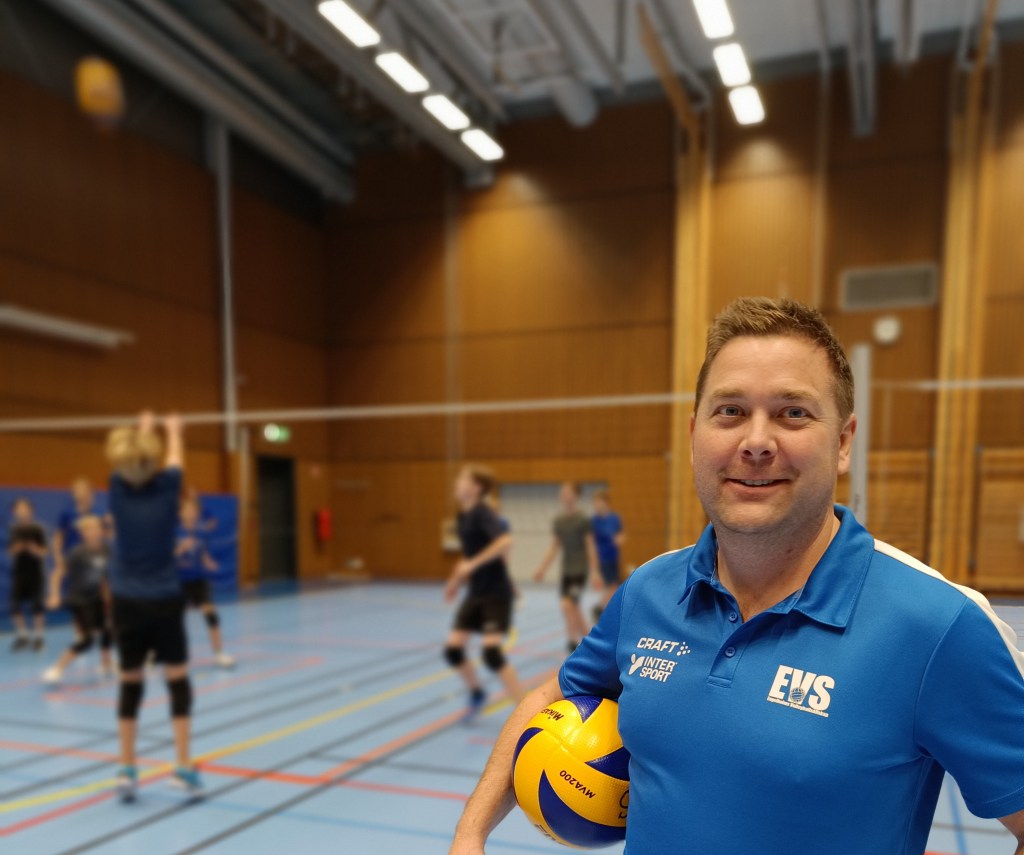Johan Gärdsmark, Manager of Firmware and Project Manager at HemoCue, strives for open communication when his team members face new challenges and steep learning curves. As they build new software and support HemoCue’s point-of-care blood diagnostics products, Johan’s perspective on teamwork and what success actually looks like comes from a surprising place: coaching his son’s volleyball team.
What is your role at HemoCue?
I’m the manager of our firmware team and a project manager here in Sweden. My team´s and my job is mostly about defining and designing features for new products. Another part of my role is to collaborate with my colleague in India, Shanti Pi, who leads the work with our cloud and application development.
The way I split my time varies. Depending on the situation, I may spend 20% of my time as a manager, 50% as a project manager and 30% on other activities, for example supporting people who need help.

How would you describe your leadership style?
As a software engineer, you have to be very structured and detail-focused. Because of my engineering background, I thrive in an action-oriented environment with clear decisions and responsibilities. I like when answers are black and white, but in reality, they are often in the grey zone. Nonetheless, they also need to be handled to drive action and decisions.
Transparency is important to me. I’m quite open with my team—as much as I can be—about plans and what’s happening. If someone is delayed, it’s never a problem to say, “This took much longer than we thought it would,” as long as they are vocal about it. It all comes down to keeping commitments, being completely transparent if there are problems, and communicating clearly and accurately.
Also, I’m very flexible about working hours. We have the privilege of working with software, and most of the time, it doesn’t really matter if you’re in the office or at home. If someone feels like they perform better at home, they are free to decide for themselves. On the other hand, it’s important to me that we have a good team atmosphere and I encourage the whole team to meet at least once a week.
As a coach to my son’s volleyball team, I see similarities between coaching that team and coaching team members here. It’s about team spirit, making everyone feel engaged and wanting to reach common goals together.
For example, we were at a volleyball tournament and we lost the bronze medal match. But I’m 100% sure everyone on the team was excited and had a great experience regardless. Even if the ultimate goal is to win, we can enjoy the challenge and celebrate our learnings which will make us stronger in the long run.
You touched on transparency. Can you speak more about how that comes into play on your team?
It can be seen in our daily work and how we collaborate. When we review each other’s code, there can be opposing opinions and conflicts, but I expect everyone to keep it at a professional level. It’s important to be open about defects. For example, if we identify a defect in software, I want my team to be open, not passing on problems to the next person. Obviously, it’s never good when we miss something, but we should celebrate the fact that we caught it before it reached the customer.
From a company perspective, my team members are viewed as experts in anything that has to do with software. That’s not always the case, but because we are small in numbers, we need to have a broad set of competencies rather than being specialized in one area. We must take on assignments that may require a big learning curve for us. For example, new technology platforms that may require a certain set of development tools, programming languages, architectures or design patterns.
Together, we’re getting started on that journey. We find a plan and learn from the experts. If someone is uncomfortable with an assignment because they feel like they lack the correct competence or experience and they’re open about that, then it becomes a discussion. That discussion might end up with me telling them I want to challenge them, and then I make sure to act as support throughout their journey.
What could someone new to HemoCue expect?
The first thing I noticed when I came to HemoCue was that everyone said “Hello” in the corridor, even though I didn’t know them. It’s a welcoming feeling. You have this closeness and access to the different departments. We take time to help each other because we have a common goal. It’s quite easy to get the bigger picture of what we’re doing and why we’re doing it.
We’re creating medical devices, so documentation and understanding the complete system are important. If you only want to code without really thinking about how it helps healthcare professionals, then HemoCue might not be the right company for you. Our focus is on the outcome and on stable, robust, reliable devices with a high focus on quality, so we’ll never do fast, progressive, weekly updates to our software.
What continues to draw you to HemoCue?
As I mentioned, we’re a small team, and at HemoCue that means we’re agile and flexible. That’s the advantage of being a small company. But that also means the priority can switch quite fast. You need to be willing to adapt and take ownership at work. If you’re willing to do that, it’s very engaging because then you have an opportunity to learn and grow.
I can honestly say that I never planned on staying at HemoCue for 12 years, but many factors have kept me here. I have been challenged, I have great colleagues and the atmosphere here overall has made me stay.

How could a new associate expect to grow professionally?
As soon as I joined, I became the expert at low-level development because I came with that background and there was no one else with those skills. I felt that I was responsible from the beginning. If someone joins who has expertise within a specific area that they want to develop in, they may soon become the expert with growing responsibilities.
Another great thing about working at HemoCue is that we can actually influence the customer’s experience of our new products. If you’re in an organization with thousands of people working on the product, you have a very, very small chance of doing that. For example, we’re developing a new product with a graphical user interface. Somebody on my team might say, “We should not use that icon; we should use this symbol instead.” And that feedback might be put to use straight away in the design process. You can really impact the design of the final product. That’s really, really cool.
What are you excited about?
I’m looking forward to further growing my team as software always seems to be on the critical path for every project. Also, to continue collaborating with Shanti and her team in India and see how we can grow together.
I’m also excited about our endless number of opportunities. We are a global company with several hundred thousand analyzers on the field in 130 countries, testing 400,000 patients per day. From a global health perspective, it’s mind-blowing to think about what we could do with that data.
But mostly, I’m looking forward to my team supporting the rest of the organization with new products.

Leave a Reply